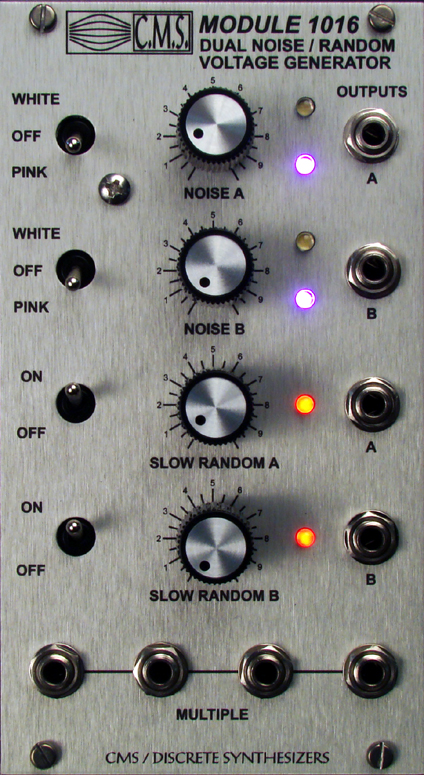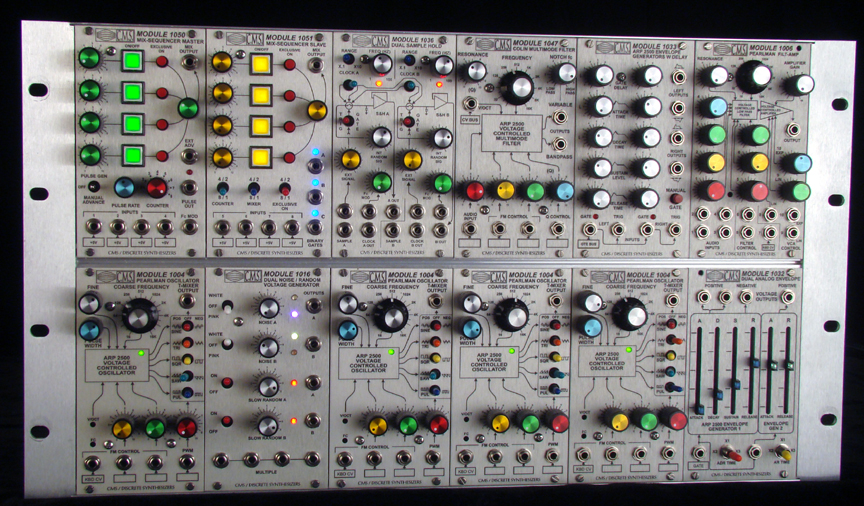| The CMS Module
1016 is a functional circuit package designed for use in the
CMS Series 1000 electronic music modules. This module contains
two identical White/Pink Noise and Random Voltage Generators.
The two noise outputs, A and
B, are generated from two independent diode noise sources.
Through successive filtering, the white noise is transformed
into pink noise and finally into a slow random voltage. Output
attenuators and on/off switches are provided for the two noise
sources and the random voltage outputs.
The maximum amplitude of all
the outputs is adjusted so that an output voltage will exceed
+5 volts about 1% of the time. This insures a paucity of excursions
past + 10 volts.
The White Noise generator produces
a flat power bandwidth from 5 Hz to 20 KHz.
The Pink Noise is filtered to
attenuate highs and boost the low frequencies, resulting in
equal energy per octave.
The Slow Random output has peak
signal power between 1 Hz and 10 Hz. It is a useful source
for modulating various destinations with a smoothed random
voltage. I personally describe it as a "squiggle"
voltage. It can be used in very small amounts to modulate
VCOs to produce a random chorus effect. In larger amounts
it is very useful in modulating filters to produce a "watery"
type of modulation effect. This particular effect can be clearly
heard on ARPs demo record "The ARP Family of Synthesizers"
by Roger Powell.
A convenient 4 jack multiple
is located at the bottom of the front panel. |


